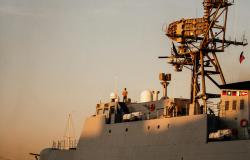
The world has entered a new nuclear age. Scholars have characterized this “third nuclear age” as one of renewed competition among nuclear-armed great powers and the coming maturation of new technologies. I trace the origins of the new nuclear age. Focusing primarily on US strategies with two case studies on conventional strike capabilities and missile defense and briefly examining how Russia and China respond with their nuclear buildups, I argue that the new age is not simply a renewed Cold War-like competition with more advanced technologies. Instead, the new nuclear age shows significant path dependency from post-Cold War US strategies against rogue states. It inherits a strategic focus on regional contingencies and the interplay between nuclear deterrence and “conventional counter-deterrence.” The latter seeks to deny nuclear-armed US adversaries the ability to deter US regional intervention by undermining their nuclear deterrence capabilities. While these strategies enhance US conventional superiority, they also fuel an arms race in peacetime and heighten contention in crises.
Policy implications
- Cultivate strategic empathy. Recognize that adversaries often judge intentions based on worst-case scenarios rather than stated goals. US decisions on conventional strike and missile defense have provoked anxiety in Russia and China, just as Washington's view of China's nuclear expansion has soured relations. Proactively clarifying defensive motives and seeking mutual transparency can reduce such damaging misperceptions.
- Constrain bureaucratic inertia. Regularly review and justify the funding of weapons programs. This prevents entrenched offices and budgets from automatically perpetuating strategies that may no longer serve US interests.
- Prioritize tailored arms control dialogs. Extend talks beyond classic nuclear treaties to encompass conventional strike weapons, missile defense, and emerging technologies. This helps reduce misunderstandings and caps costly “action–reaction” between adversaries.
- Strengthen crisis communication channels. Maintain reliable military-to-military hotlines and diplomatic backchannels to mitigate risks of escalation in regional conflicts. Early, direct communication can de-escalate tensions before they spiral into nuclear crises.
- Balance deterrence with nonproliferation initiatives. Combine firm defensive postures with policies that address the security concerns of potential proliferators. Supporting economic development, energy solutions, and confidence-building measures can discourage states from seeking nuclear or advanced conventional capabilities.
Photo by Roman Ska